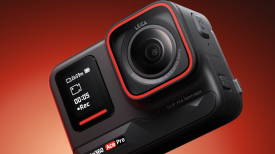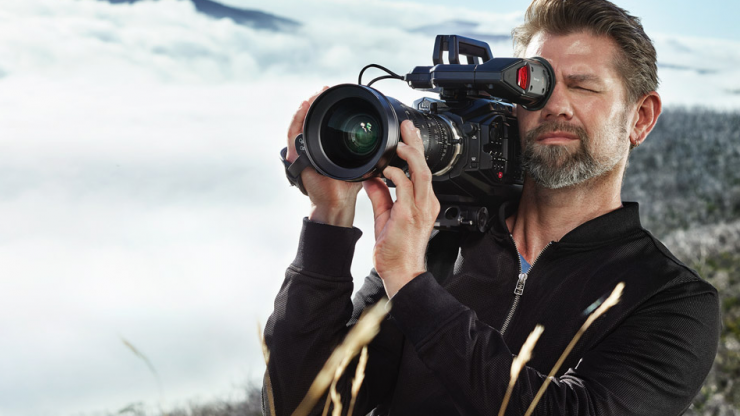
When Blackmagic Design announced a live stream to introduce new products and perhaps a new camera, I wasn’t sure what to expect. Maybe a larger body Pocket Camera? Or a whole new Cinema Camera? In the past BMD has made their camera announcements at NAB, so doing it via a live stream was certainly a new approach. Blackmagic Design has always unveiled innovative cameras at a very resonable price and by doing this they have definitely shaken up the camera world, so you really never know what they will do next.
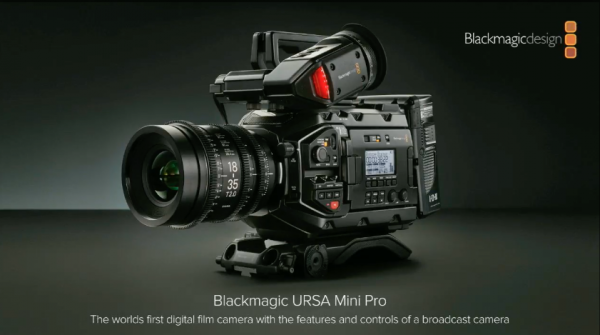
What they did announce was the URSA Mini Pro, and while it isn’t revolutionary as far as a “new” camera is concerned, it “is” what the original URSA Mini should have been. BMD is still fairly new to making cameras, and to their credit they try to innovate and do things differently. This can be great as well as frustrating. Having missing features is tough for working professionals and filmmakers. I have struggled with using cameras that aren’t designed to be a proper video camera. That’s why I like working with cameras like the C300 and FS7. They have the basics and feature set to get the job done without the workarounds. Don’t get me wrong, they aren’t perfect and we know no such camera is, but it’s great when they get close. On paper the URSA Mini Pro certainly looks like a step in the right direction for Blackmagic.
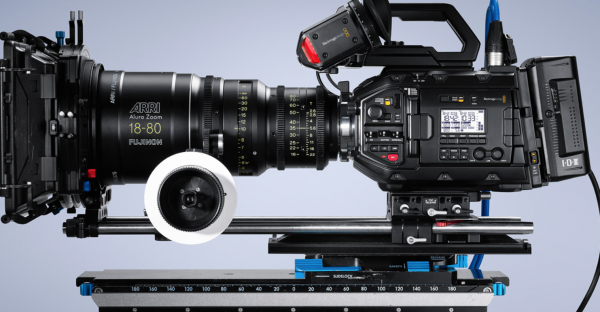
I’m going to offer my own professional opinion on the new URSA Mini Pro from a operators perspective without diving into every aspect of the camera. If you want to find out more detailed information on all the specifications you can check out our article on the release of the camera here.
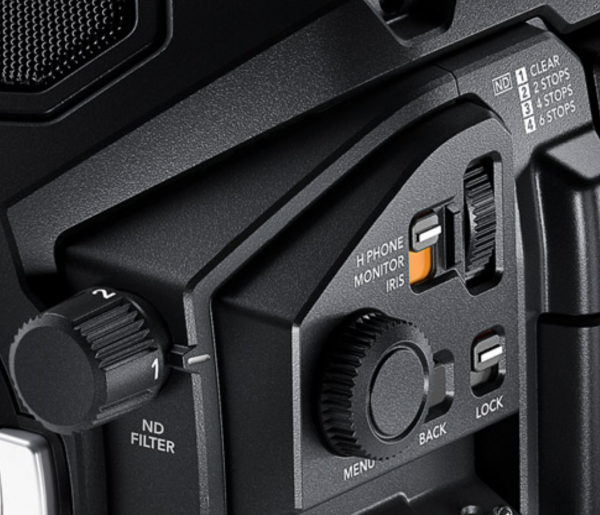
For me the #1 new feature is the built in ND filters, they are so important to have. In fact this missing feature alone had me struggling to make the URSA Mini my main camera. I’m not a narrative guy, I shoot commercial production. I don’t use matte boxes as I find them slow and cumbersome.
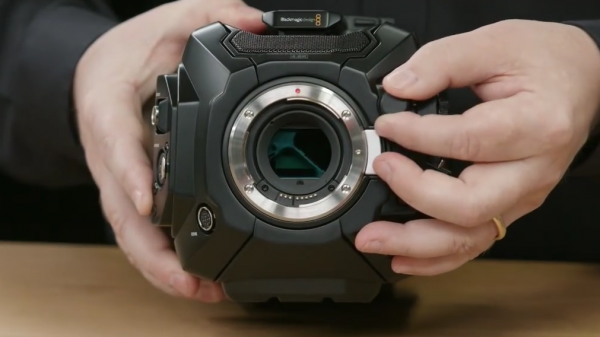
Having 2, 4 and 6 stops of ND built in means no fumbling with a pouch of ND filters and step up /down rings to use with different lenses. I’m not a huge fan of using variables ND’s either, because they all have color shifts and do some softening to the image. For paid work if I am using a camera that doesn’t have in-built ND filters I would stick to using high quality dedicated ND filters and not variable ones. Being able to just dial in the ND on the URSA Mini Pro gives it a huge advantage over the previous models, especially for solo operators.
Blackmagic says the ND filters have been designed to filter both optical wavelengths and IR wavelengths evenly to eliminate infrared contamination. This is huge because infrared ND filters are expensive to buy. We haven’t tested the camera yet, so we haven’t been able to verify just how good the internal ND filters and IR protection are.
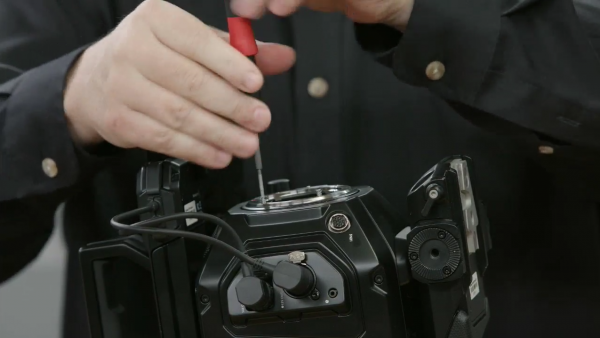
My other favourite new feature is the interchangeable lens mount. By having this you basically can convert the URSA Mini Pro into several different cameras. I own a nice B4 ENG lens with doubler that’s been sitting on a shelf for a long time, so now I can try it out with BMD’s B4 mount. Owners of Nikon lenses will also be happy with the F-Mount option. Nikon lenses are true mechanical lenses with AF and are fantastic for video but they focus the other way and. After 25 years of shooting with broadcast cameras and stills cams with Canon lenses I’ve developed muscle memory that’s hard to change.
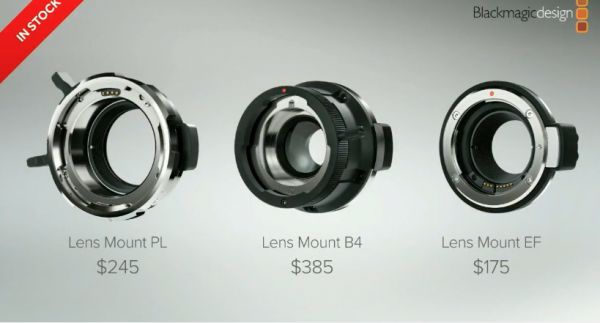
The optional lens mounts are also very affordable. The Canon EF is under $200US while the PL mount is $245US & B4 $385US. It will be interesting to see if 3rd party companies like Metabones are going to make a SpeedBooster for the URSA Mini Pro. That would be very interesting indeed.
The interchangeable mount looks very easy to use. All you need is a torque screwdriver to get the right amount of torque on each screw. Done. Now go shoot!
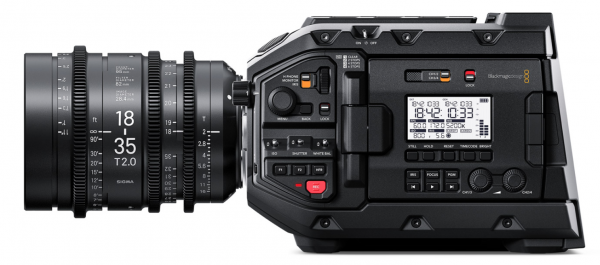
I think the way BMD approached the function buttons on the side to make the operation more like a ENG camera was a smart move. Having the smaller flip out LCD and the added status display makes it much easier to see camera settings and record levels.
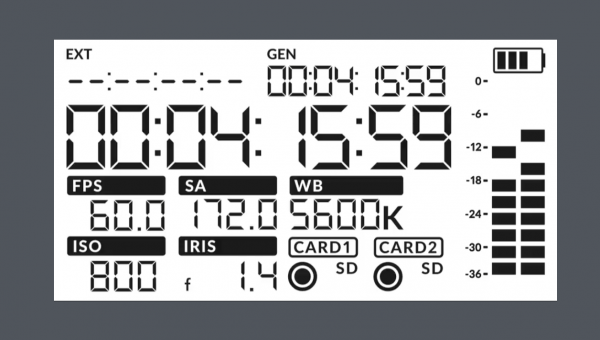
The display shows
- Record timecode
- Locked timecode and reference timecode
- Current shooting frame rate
- Shutter angle
- Aperture
- White balance
- ISO
- IRIS
- Battery indicator
- Card recording
- Audio meters for monitoring levels
All these are very useful for a camera operator.
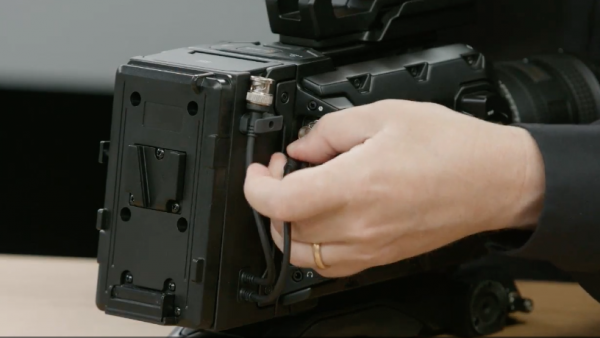
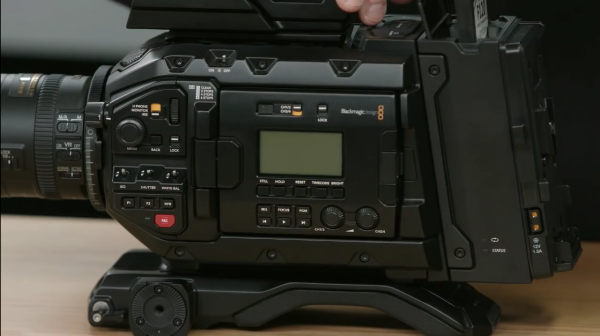
The new external SSD recorder option looks to be a great idea just as long as it’s reliable. It mounts cleanly between the camera and battery plate and plugs into the camera’s SDI outputs with two 3G cables. I like this because SSD’s are pretty reliable and affordable. Remember it’s important to always use high quality media, whether you’re recording externally or internally.
By using four card slots and adding the external SSD recorder, this really gives the camera a lot of flexibility to record for long periods of time. If you are shooting in Cinema DNG Raw you need all the storage space you can get (this is assuming that you can record the CDNG externally). If you are like me and prefer to shoot in the ProRes options it is also welcome news. Speaking of ProRes and codecs here are the flavors available.
Supported Codecs
- CinemaDNG RAW
- CinemaDNG RAW 3:1
- CinemaDNG RAW 4:1
- Apple ProRes 4444 XQ QuickTime
- ProRes 4444 QuickTime
- ProRes 422 HQ QuickTime
- ProRes 422 QuickTime
- ProRes 422 LT QuickTime
- ProRes 422 Proxy QuickTime.
Tasty! Plus you don’t have to pay extra to get them.
A few things haven’t changed like the awkward XLR audio inputs on top of the camera and the sensor. You won’t get more DR or less noise and better ISO performance but the usability of the camera to me is a huge improvement. If you don’t like to use lights, the URSA Mini cameras are not for you. This is a camera you have to know how to drive. Plan your shots and light for it. If you do, the image is stunning and stands up to cameras that cost three times as much. Don’t and you will lose control and crash into a wall. Another positive is the URSA Mini Pro is going to ship on March 9th. It’s great to see Blackmagic improving on delivery times. Maybe that feature is the best one so far.
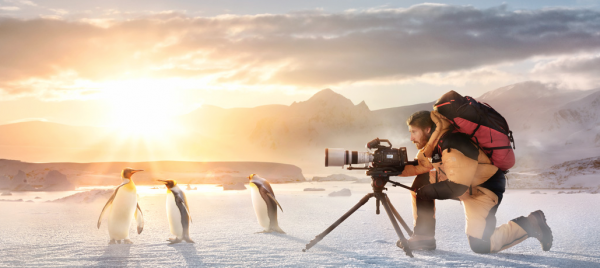
Lastly I like the attitude of giving those early adopters a break by offering a trade up program to the new camera. If you have the proof of purchase you can buy the URSA Mini Pro for $2500US off. Not a bad deal at all plus you get to keep you URSA.
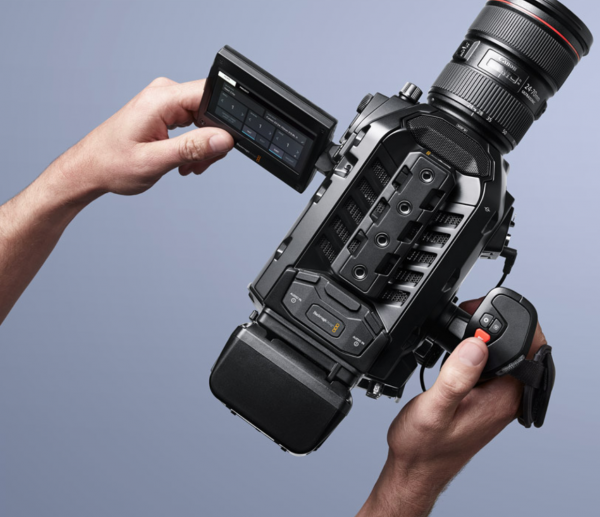
I like what i’m seeing with the new release. There are lots of worthy upgrades and features that makes the camera much more user friendly, and put it in line with other cameras on the market, but at a price that makes it tempting to buy. Don’t forget you will need a few things to make the camera usable like a few larger broadcast style V-Mount or Gold Mount batteries and potential different media, but CFast 2.0 has come down in price and you also have the SD Card option as well. To go handheld the EVF and shoulder mount kit look like must have items. They are actually a bargain compared to other solutions. All in all a impressive camera.
Now, if you have been eyeing the Mini 4.6K for a while are these feature upgrades the final push for you? Let us know in the comments.



